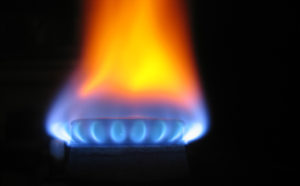 Natural gas futures rose for a second day on concern that Atlantic Storms may disrupt production in the U.S. gulf, while weather forecasters continued to predict warmer-than-usual temperatures across key consuming areas, boosting the power-plant fuels demand prospects.
Natural gas futures rose for a second day on concern that Atlantic Storms may disrupt production in the U.S. gulf, while weather forecasters continued to predict warmer-than-usual temperatures across key consuming areas, boosting the power-plant fuels demand prospects.
On the New York Mercantile Exchange, natural gas for October settlement rose by 0.34% to $3.679 per million British thermal units at 8:13 GMT. Futures ranged between days high and low of $3.687 and $3.665 per mBtu respectively. The power-plant fuel rose 0.3% on Tuesday, extending its weekly advance to over 2%.
Natural gas surged after the National Hurricane Center reported yesterday that low-pressure systems over the Lesser Antilles and Mexico’s Bay of Campeche were producing thunderstorms and rainfall. The area of low-pressure over the Bay of Campeche has a 20% chance of becoming a tropical storm within the next five days, while the system in the eastern Caribbean near Dominica has a 50% chance. According to the Energy Information Administration, the Gulf accounted for 5.7% of U.S. gas output.
Phil Flynn, a senior market analyst at Price Futures Group in Chicago, said for Bloomberg yesterday: “These storms are definitely providing a little extra support for the market because there’s concern that they could move into the Gulf. It’s pretty warm in the Midwest and the hot temperatures are still boosting cooling demand.”
Natural gas continues to draw support by increased demand prospects as weather forecasting models keep pointing at warmer-than-normal weather in key consuming areas. MDA Weather Services in Gaithersburg, Maryland, expects above-usual temperatures over the central U.S. through September 17. According to AccuWeather Inc., the high in Houston may be 95 degrees Fahrenheit on September 8, 5 above normal, while temperatures in Chicago may peak at 82 degrees, 4 above average.
When higher-than-normal temperatures are expected, natural gas surges as increased electricity demand to power air-conditioning calls for more supply of the fuel, which is used for a quarter of the U.S. electricity generation. Mild temperatures have the opposite effect. According to the Energy Information Administration, power generation accounts for 32% of U.S. gas demand.
Market players will also be keeping a close watch on this weeks EIA U.S. inventories data. Early injection estimates range between 45 billion and 53 billion cubic feet, compared to the five-year average build of 60 billion. During the comparable week last year, natural gas stockpiles rose by 33 billion cubic feet.
Last Thursday, the Energy Information Administration reported that U.S. natural gas storage surged by 67 billion cubic feet in the week ended August 23, 1 million above the five-year average build of 66 billion cubic feet, and surpassing last year’s 64 billion gain during the comparable week. According to a Bloomberg survey of 25 analysts, inventories were expected to rise by 62 billion cubic feet.
Total gas held in underground storage hubs equaled 3 130 billion cubic feet as of last week, 7% below last year’s 3 365 billion. Reserves however remained 1.5% above the five-year average stockpiles at 3 085 billion cubic feet.





